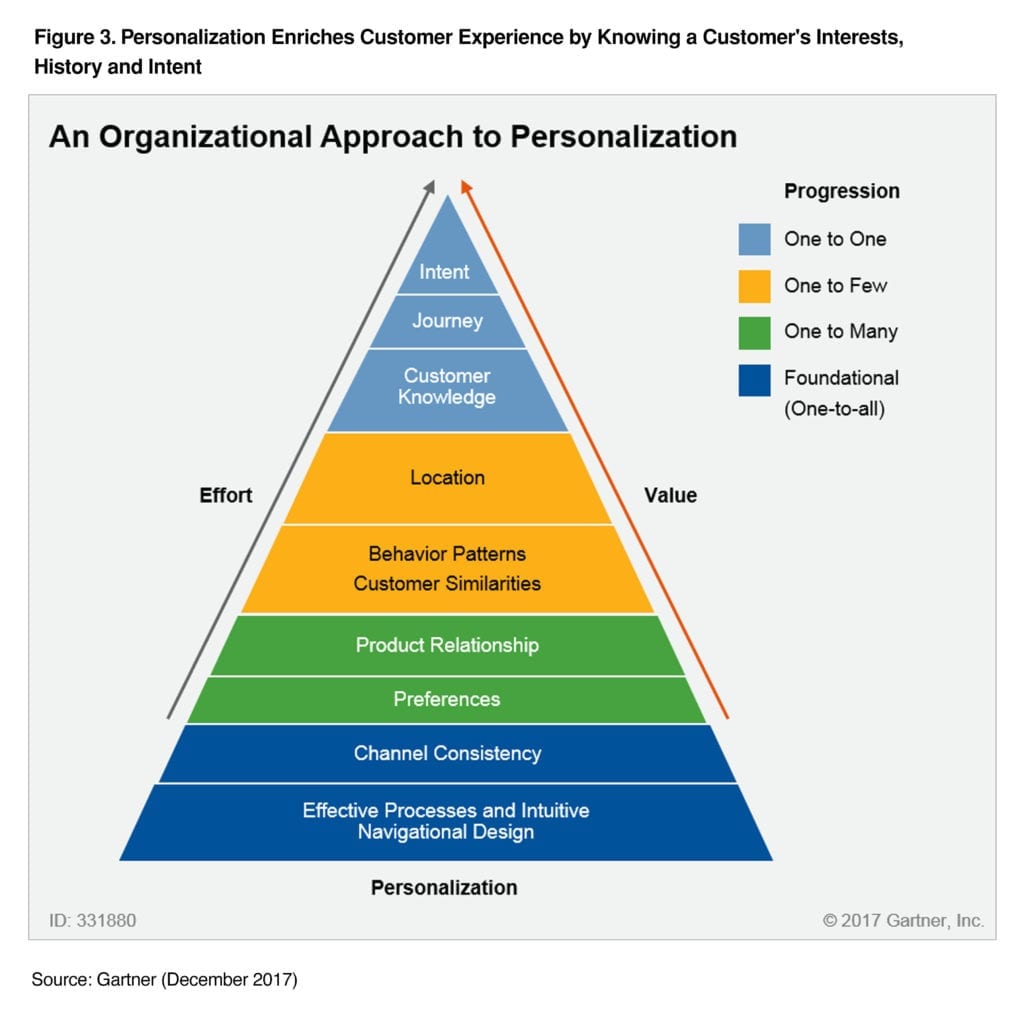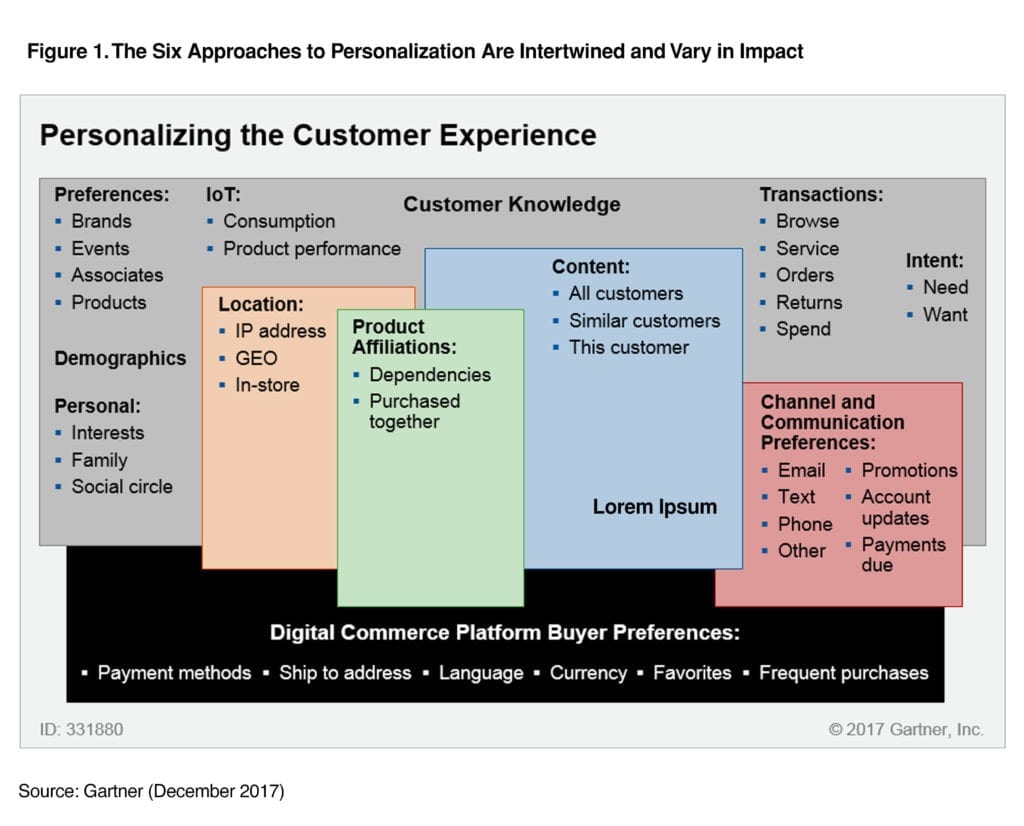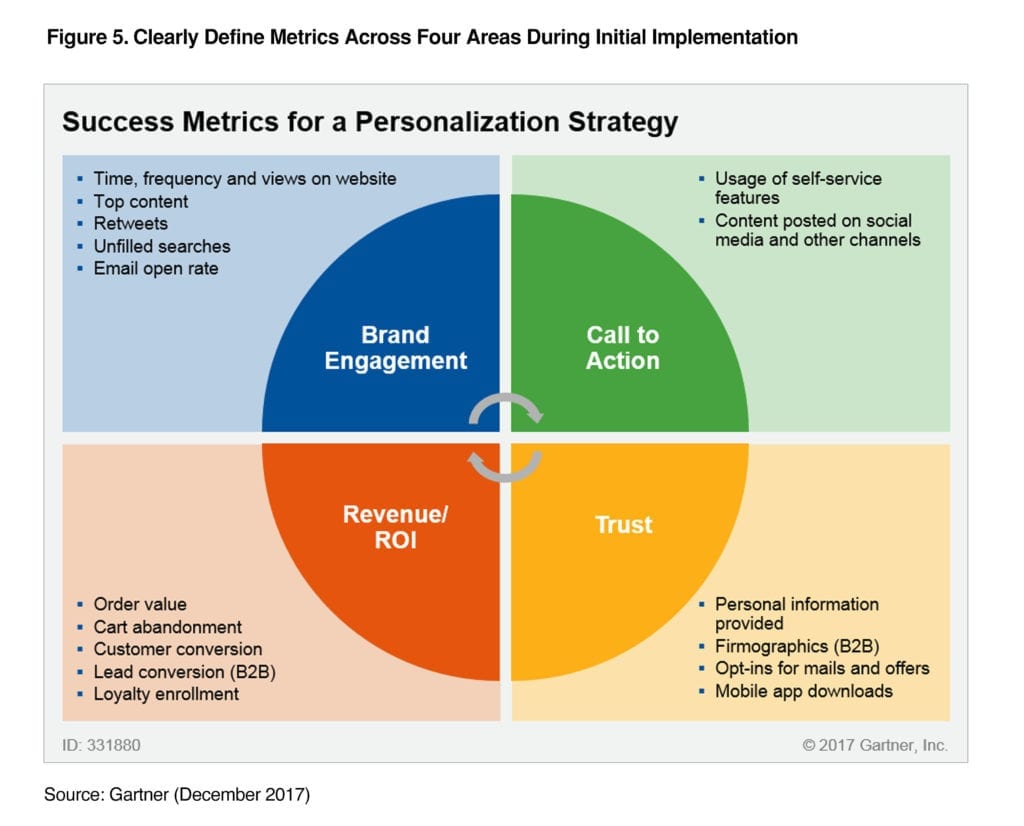4 Point Personalization Checklist for Retailers
Climb your way to the top of the personalization pyramid. Here’s the list of must-have capabilities to get there.

Personalization isn’t what it used to be. When the term “personalization” was originally coined, it referred to the ability to tailor digital content and experiences, based on expected behavior of a group. At best, marketers and merchandisers chose those shopper cohorts based mostly on demographic data, with some light behavioral analysis.
This “old school” personalization treated you the same way as it treated a million other people that looked like you on paper and behaved in roughly similar ways in the real world. As it turns out, this wasn’t very “personalized.” After all, how well can one’s closest family members describe how we “behave in the real world”. If they use heuristics and generalizations, how much better could strangers do?
 “Personalization must reside on a firm foundation of well-designed processes and navigation.Incorporating personalization on poorly designed processes without intuitive navigation or consistent customer experiences will not be nearly as effective as personalization delivered on a solid foundation for the customer experience.”
“Personalization must reside on a firm foundation of well-designed processes and navigation.Incorporating personalization on poorly designed processes without intuitive navigation or consistent customer experiences will not be nearly as effective as personalization delivered on a solid foundation for the customer experience.”
– Use Personalization to Enrich Customer Experience and Drive Revenue, Gartner Inc., Penny Gillespie, Guneet Bharaj, 2 April 2019
The difference is behavioral data, which has become far more available than it was in the early days of personalization. Now, for certain activities, strangers with data can describe how I behave even better than my own mother can. (Love you Mom.)
To help you do this, I’ve defined the different tiers of customization for a digital experience, and shared a handy checklist to make sure your personalization strategy ladders up to the most challenging and valuable point of the personalization pyramid: predicting a user’s intent.
Old School: Persona-Based Segmentation
Personas are those fictional characters that represent key buyer-types to your organization. We envision who they are, what they will buy, their price-points, and what drives their buying decisions.
Marketers and merchandisers do gymnastics trying to anticipate the multiple personas that they will deal with and they create tons of rules to meet their customers’ needs — in vain. Most possess rudimentary automation, but it’s fueled by manually tuned rules.
The result? A great blob of generic spaghetti built upon thousands and thousands of merchandising rules that constantly need to be updated. No doubt these organizations are spending money to acquire customers and hire folks to do the merchandising gymnastics. But customers aren’t feeling anything other than greeting card platitudes. Customers deserve better, no matter the persona.
The idea of personas is perfect for product development, but it’s now outdated for selling. People want to be sold to as a cohort of one.
Today’s Table Stakes: Personalization
Personalization gives you more advanced segmentation. We know who the customer is based on information from their login, we have figured out their purchase patterns, and we may even have some social data.
Personalization uses predictive analytics and query matching to make more rules. All of these efforts then drive more rules. Each additional rule contains a paradox: it may get you closer to treating a customer individually, or it may backfire and add risk that you miss the mark. When it works well, you customize the experience, offer relevant recommendations, and increase conversions.
 Use Personalization to Enrich Customer Experience and Drive Revenue, Gartner Inc., Penny Gillespie, Guneet Bharaj, 2 April 2019
Use Personalization to Enrich Customer Experience and Drive Revenue, Gartner Inc., Penny Gillespie, Guneet Bharaj, 2 April 2019
Gartner, a leading analyst firm, outlines above six different approaches to personalize the customer experience. Each facet differs in complexity, but they’re all part of the path that builds up to the pinnacle of the personalization pyramid.
The Top of the Pyramid: Predicting Intent
The capstone is individualization, or the ability to predict one user’s intent. This is where you finally dump thousands of rules and instead leverage not only predictive analytics, but machine learning, signals, and natural language processing. Together, all of these technologies make search results uniquely personal. By capturing log files, transaction data, what people click on — and what they don’t — you can analyze and predict user intent.
If you are not familiar with signals, this table offers some of the types of signals that can feed your algorithms.
Types of Signal Capture |
Signal |
Signal Type |
| Query | Behavior |
| Click | Behavior |
| Page View | Behavior |
| Add-to-Cart | Behavior |
| Rating | Behavior |
| Review | Behavior |
| Message | Behavior |
| Purchase History | Profile |
| Past Queries | Profile |
| Language | Profile |
| Loyalty Program | Profile |
| Business Unit | Profile |
| Job Role | Profile |
| Gender | Profile |
| Age | Profile |
| Previous Location | Session Info |
| Current Location | Session Info |
| Direction of Travel | Session Info |
| Device | Session Info |
Individualization requires using artificial intelligence in two ways. Obviously, you want to employ AI to data as it is ingested; it clusters and classifies data when it comes in to make it more discoverable at query time. Also at ingest, make sure to employ natural language processing functions such as Named Entity Recognition (NER) to determine if a document refers to people, places, products, or some other entity that you find important.
AI is invoked again when a user makes a query. This lets you predict query intent by combining domain context, user context, and query context. A Semantic Knowledge Graph (SKG) is a continuously current mapping of important entities (people, places, things, synonyms, misspellings, topics, phrases, etc.) and how they relate. Once a new query comes in, you can map it to the SKG and predict intent.
Your personalization engine must constantly self-learn and tune the relevancy of its results to make intent prediction more precise and use that precision to further personalize the user experience. With far more data, more processing power, more machine learning algorithms and millions more applications in everyone’s pockets, legitimate 1:1 hyper-personalization is within reach.
4 Point Personalization Checklist
Now that we’re working from the same dictionary definitions, here’s a list of capabilities that every personalization engine must have.
1. Gather Information on an Individual Level
Be sure to capture individualized information at every touchpoint. This can include things like profile data, historical purchases, browsing behavior, and location. These are the customer behavior signals we mentioned earlier — they signal to us the customers’ preferences, needs, and intent. Without this information, personalization will fall flat.
Signals also identify where a customer is in their journey, so we can provide the next best action, whether that’s purchasing an accessory product or accessing an FAQ form. Lucidworks helps ecommerce teams combine human expertise with machine learning to deliver experiences that are uniquely personal.
2. React in Real Time
COVID provides an example of the dangers of assuming customer needs and behavior. Did grocers predict they’d sell out of flour? Or have millions of new online shoppers? Did retailers expect to sell more athleisure as people abandoned pants with zippers? The sooner you can see those trends in the shopping and buying signals, the sooner you can adjust promotions, recommendations, search results, landing pages, product offerings, and filters.
Solutions like Predictive Merchandiser can automatically boost results with high click-through rates and allow merchandisers to update product results in real time without waiting for IT.
3. Recognize and Respond to Your Customer’s Omnichannel Journey
One of the big challenges to providing a connected experience is being able to collect, analyze, and react to real-time data across all of the different touchpoints customers have with a brand — clicking through a link on a marketing email, abandoning a cart on mobile, researching on a PC. A customer’s profile of preferences should follow them on every channel.
If you can identify where a customer is on their path to purchase, it enables more appropriate personalization and recommendations. For example, with Smart Answers, a chatbot can detect if customers who recently purchased the same item have similar questions and proactively offer a suggested FAQ answer for that product.
4. Measure Performance
Modern personalization engines consist of dynamic, variable, interconnected parts. Each of those components can be individually tuned or optimized, but quite often the whole does not equal the sum of its parts (sometimes for the better, sometimes for the worse).
 “These metrics will help not only track the organization on how its personalization strategy is paying off, but also determine what other personalization use cases and channels the organization should plan to include in its strategy.” – Use Personalization to Enrich Customer Experience and Drive Revenue, Gartner Inc., Penny Gillespie, Guneet Bharaj, 2 April 2019
“These metrics will help not only track the organization on how its personalization strategy is paying off, but also determine what other personalization use cases and channels the organization should plan to include in its strategy.” – Use Personalization to Enrich Customer Experience and Drive Revenue, Gartner Inc., Penny Gillespie, Guneet Bharaj, 2 April 2019
You want a system that can show system administrators and ecommerce merchandisers how business users and customers interact with the system. The performance of certain KPIs in one part of the business could reveal new opportunities for other channels. Set up the system so stakeholders can learn and adapt as time goes on.
We’re Never Done with Personalization
The road to understanding user intent is an arduous one, but not impossible. And it’s worth the climb! An effective personalization strategy enriches the customer experience, leading to greater customer satisfaction, increased revenue, and long-term loyalty. Once you start walking that road, you won’t want to stop. People change over time, and so must your personalization. Learn how to make your customer’s experience as uniquely personal as they are.
These graphics were published by Gartner, Inc. as part of a larger research document and should be evaluated in the context of the entire document.
LEARN MORE
Contact us today to learn how Lucidworks can help your team create powerful search and discovery applications for your customers and employees.